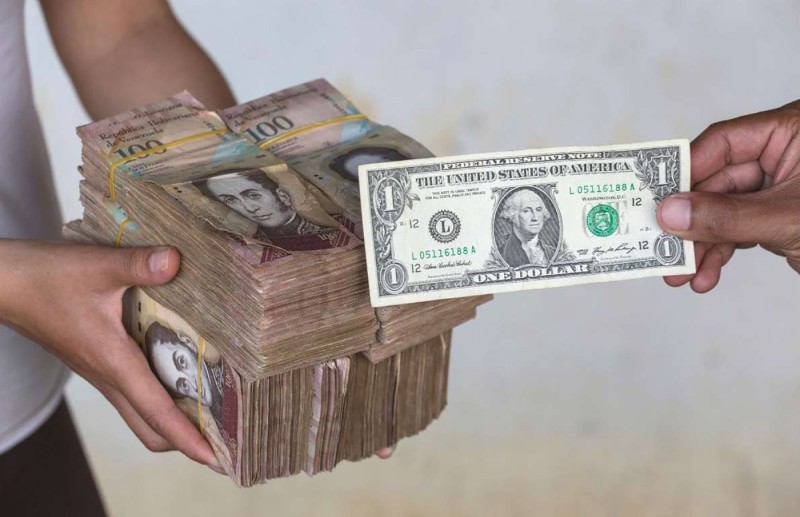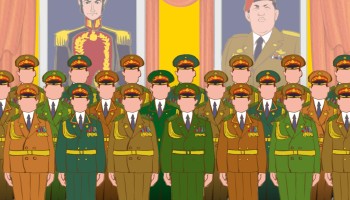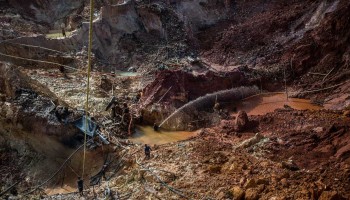“Not a single dollar for coup-plotters, destabilizers, and speculators. The dollars go to the people,” said Venezuelan President Hugo Chávez on national television in 2003, as he launched a strict foreign exchange system that gave government bodies control over official exchange rates.
The measure was supposed to be temporary, meant to stop capital flight and to prop up the local currency, the bolivar. But in the 16 years since Chávez’s speech, foreign exchange has been tightly regulated by the government, stimulating a colossal black market and opening the doors to huge fraud schemes involving public money. Currency controls were eased for the first time only last August.
No official figures have been published on what this has cost Venezuela, but there are some clues.
Former government officials have estimated that as much as US$ 300 billion in state revenues went missing, while one Venezuelan economist estimates that the government has given away $41.27 billion in exchange subsidies between 2014 and mid-2018.
Economist Asdrubal Oliveros, director of the financial analysis company Ecoanalitica, says some of the money has ended up in the pockets of businessmen, politicians, and officials.
Oliveros explains that between 2003 and 2014, the government intervened to let favored people and industries exchange Venezuelan bolivars for foreign currency at preferential rates. The idea was to prioritize the industries deemed most important to the public, such as food or medical supplies.
But what actually happened was the development of a two-tier system, with the value of an “official” dollar kept artificially low for a handful of industries while its true value soared on the black market, driving down the price of the bolivar and feeding inflation.
The system enabled individuals in industries with access to cheap dollars to import goods using wildly inflated invoices and then pocket the excess dollars or sell them on the black market for a profit.
Shell companies were also set up to facilitate access to the cheap dollars, Oliveros says. In some cases, particularly in the food and health industries, company officials just grabbed the dollars and didn’t bother importing the goods.
By early January 2018, the system was crazily out of whack with the international economy. Companies importing food or medical supplies at the preferential rate were paying 10 bolivars per dollar, while the official rate was 3,345 bolivars per dollar. Meanwhile on the black market, a dollar was worth around 130,000 bolivars.
Attempts to Stave Off Disaster
Since 2003, the Venezuelan government has tried about half a dozen different approaches to solve its financial problems, creating an exchange rate commission, a foreign trade center, a protected currency system, and even a mechanism based on public auction of preferential dollars.
Although various models of currency control were tested by the Chavist regime, two things didn’t change: “official” dollars remained difficult to buy despite artificially low rates, and the real-world price of dollars continued to soar on the black market.
As a result, the bolivar has been repeatedly devalued, both by market forces and the government, making it worth less and less in relation to other nations’ currencies. Amid such uncertainty, few were willing to buy bolivars, which drove the currency down even further.
In theory, free-market countries let the value of their currencies float according to market forces, believing that strong internal economies will create international demand for their currency and support its value. Most economists believe intervention is only a stop-gap measure that ultimately fails.
In Venezuela’s case, the government intervention pushed the country into hyperinflation by late 2016. Prices of goods and services soared so fast they became meaningless. Average citizens could no longer afford even the most basic commodities.
According to a presentation by Miguel Angel Santos, a senior research fellow at Harvard University’s Center for International Development, a Venezuelan had to work 14 hours in August 2017 to buy one chicken; one year later, that number had risen to 309.
Faced with such uncertainty, shoppers scrambled to find and hoard necessities, driving prices up faster.
According to the Venezuelan site ProDaVinci, 100 bolivars would buy 360 eggs in 2008; three years later the number had dropped to 117 eggs; in 2014 it was down to 27 eggs; and by early 2017, 100 bolivars couldn’t buy even a single egg.
Several other factors made Venezuela’s situation worse. Falling oil prices and a steep drop in production reduced government revenue. Fewer dollars with which to trade translated into fewer imports available for purchase. Companies nationalized in key sectors such as oil, agriculture, finance, steel, and others were poorly managed. Output fell, leading to fewer products to buy, which drove up prices further.
As the country has struggled to control its crashing economy, international investors and lenders beat a hasty retreat. The government responded by printing more money and raising the minimum wage again and again, which further spurred demand for scarce goods and forced prices still higher.
2018: One More Devaluation
In late January 2018, President Nicolás Maduro’s government tried a new tack, abolishing the preferential 10-bolivar rate in favor of a revised foreign exchange auction system. But that didn’t work either, and the numbers just kept ratcheting up. By Aug. 1, one dollar was worth almost 173,000 bolivars at the official rate, and a staggering 3.6 million bolivars on the black market, according to www.dolartoday.com, a site that tracks black-market exchange rates.
On Aug. 17, Maduro announced yet another plan to curb hyperinflation, which was predicted to surge to about 1.37 million percent by the end of the year, according to the International Monetary Fund (IMF). This year, the IMF forecasts that inflation will reach 10 million percent.
Maduro devalued the bolivar by around 95 percent last August, which brought the official rate to about 6 million bolivars per dollar, on a par with the current black market rate. In addition, the government removed five zeros from the new bolivar and tied it to Venezuela’s national cryptocurrency, the petro, which itself is primarily linked to the price of oil, Venezuela’s most valuable export.
According to Oliveros, the currency exchange controls have warped the national economy.
“It has been more profitable for local producers to acquire external goods than to produce them internally at higher prices than foreign markets,” he says. “This produced a strong contraction of the local productive [capacity].”
The long and opaque process required to buy dollars has also made merchandise difficult to import, causing a general scarcity and spurring the costs of goods and services even higher. Imports reportedly fell to $18 billion in 2016, down from $66 billion in 2012, as foreign-made goods became increasingly expensive.
Raw material scarcity in Venezuela has led some international companies to cut back operations. In 2016, it was The Coca-Cola Co., due to a shortage of available sugar; in 2017, Ford Motor Venezuela assembled only 401 vehicles, just over 1 percent of capacity, because of a lack of imported raw materials.
Other companies, like Kellogg Co., simply left the country. In May 2018, the US cereal maker joined other multinational companies that had shut down including The Clorox Company, Kimberly-Clark Corporation, General Mills, General Motors Co. and Harvest Natural Resources Inc.
Earlier this month, President Maduro was sworn in to his second term in office. Whether he serves the full six years may depend on what happens to the country’s economy in 2019.






